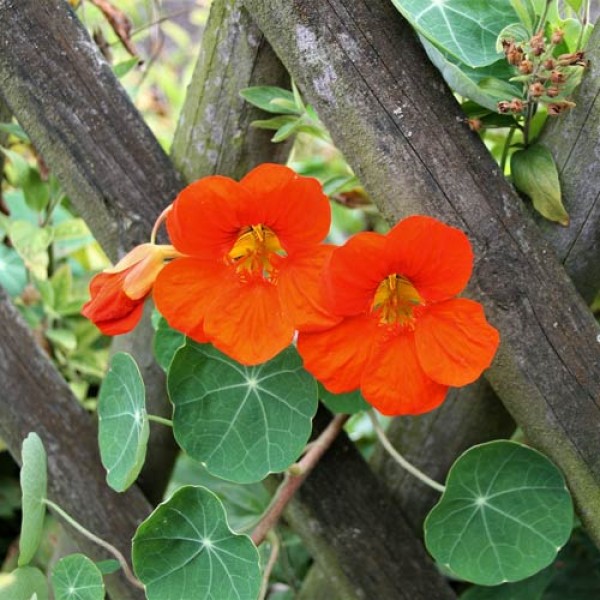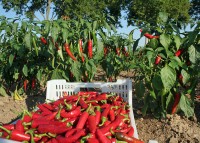
Growing Nasturtium
How to plant grow, and care for nasturtiums
Nasturtiums are divided into trailing or climbing types (Tropaeolum majus), bush types (T. Minus), and the mexican type (T. Peregrinum). They are not only a pretty flowering wonder in the garden, but the leaves taste pleasantly hot and peppery and enrich the menu. In addition, the pungent ingredients mustard oil glucoside and sulphur have an antibiotic effect and can help prevent infectious diseases.
Location
Plant Nasturtium in a sunny spot on a poorer, well-draining soil. A nutrient-rich soil will encourage more foliage than flowers. They will grow in partial shade, but won`t bloom as well.
Trailing nasturtiums are a great choice for growing in a window box or hanging basket, as their vines will drape and climb beautifully. Bush nasturtiums are a better choice for smaller gardens or edge plantings.
Sowing
Nastrtium is extremely sensitive to frost and should be sown 1 to 2 weeks after your last spring frost date. Alterntively you can start indoors in April. Soil temperatures should ideally be between 12° and 18°C.
Sow the seeds about 1 - 1.5 cm deep and 25 to 30 cm apart. Keep moist until the first leaves appear, which should happen in 7 to 10 days.
Care
Nasturtium does not typically need extra fertilizer (unless your soil is extremely poor).
Water regularly throughout the growing season, but be careful not to overwater your plants. Nasturtiums are somewhat drought tolerant, but still prefer to grow in moist soil. Heat- or water-stressed plants will have subpar blooms and flavor. Cutting off the faded/dead flowers will prolong blooming.
If you`re growing nasturtiums in containers, they may need to be trimmed back occasionally over the growing season.
Flowering
The beautiful, spurred flowers in orange, golden yellow or velvety red appear from June onwards. They often bloom until autumn, but with the first night frost the splendour ends abruptly. The plants freeze to death immediately.
Protection against pests and diseases
With its mustard oils, the nasturtium successfully protects itself against pests and fungi. However, it is often attacked by aphids or the caterpillars of the cabbage white butterfly, therefore it is often planted next to cabbages or roses to attract the pests away from them. If the plants are sown in summer, the aphid attack is usually less.
Nasturtium is a friend of: bean, broccoli, cabbage, cucumber, kale, melon, pumpkin, and radish.
Harvest
The seedpods may be pickled and are suitable as a caper substitute. To do this, place the green buds and unripe fruits in a sieve in boiling water and then marinate them in salt overnight. The next day, pour boiled white balsamic vinegar over them, leave to infuse and repeat the infusion after a few days. Then put the capers with the balsamic vinegar into sterilised jars with screw lids. Keep in a cool place and consume within three months.
If you allow the seedpods to mature and dry out on the vine; they`ll fall off and can be collected. Store them in a paper envelope in a cool and dark place and replant them in the next spring.















